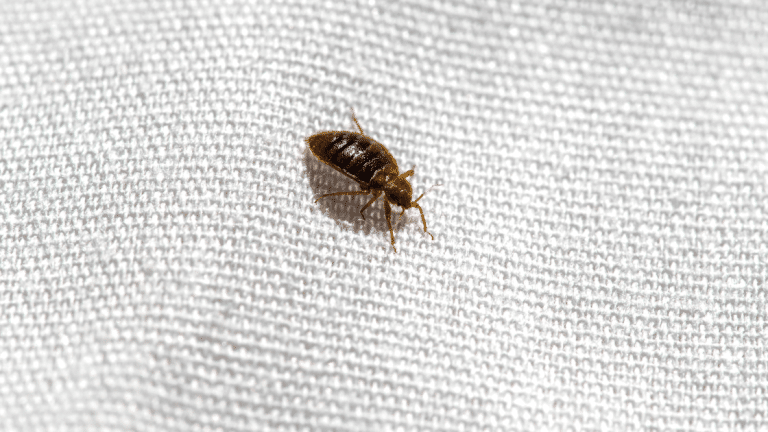Bed bugs are a major annoyance because they are notorious for feeding on humans at night. Bed bug bites are scratchy and painful, and may even lead to allergic reactions in some cases. Bed bugs make no distinctions and will live anyplace they can find a food supply. While bed bugs may appear out of nowhere, the truth is that they are famous for hopping from one place to another, including from homes to hotels. It only takes one pregnant bed bug to start a full-fledged bed bug infestation, however, if you are vigilant about inspecting for bed bugs while traveling, you can considerably reduce your chances of bringing bed bugs home as a souvenir.
Bed bug prevention begins the moment you enter your room
Bed bugs are known to hitch rides back in luggage. You’ll want to check on your belongings to avoid bringing bed bugs home. While it’s natural to want to put your heavy luggage down as soon as you enter your hotel room, doing so is a big mistake. The longer your belongings are infested, the more likely it is that they will sneak inside for you to bring home. Check for bed bugs before allowing your luggage to touch the bed, ground, or other furniture.
Where to Look in a Hotel Room for Bed Bugs
- These pests are about the size of an apple seed and are very good at hiding, thus making them extremely difficult to identify. But if you are aware of where they hide and what to look for you can considerably reduce their population at home.
- Place your bag on the luggage carrier which you can see in your room.
- Bed bugs have a few favourite hiding places in most hotel rooms. The following are the common places to find bed bugs:
- On or near the bed. Bed bugs can hide in the most inconspicuous places, so inspect the bed frame, mattress, box springs, linens and headboard. Remember bed bugs grow eggs at a faster rate. So ensure that you don’t carry them back to your home.
- Furniture for the living room, particularly upholstered furniture. If your room has a couch or sofa, look in between and beneath the cushions. Bed bugs can sometimes be found hiding in nightstands or dressers.
- Other dark, small crevices. Bed bugs look for places where humans spend the majority time. However, if necessary they will go to some other place to hide as well. Bed bugs have been found hiding in electrical outlets, behind sagging wallpaper and picture frames, and behind curtains.
What You Should Look For
- While seeing an actual bed bug is the most obvious sign of bed bugs, there are other things to look for when inspecting your hotel room. Because bed bugs are nocturnal, identifying an infestation before you go to bed or unpack your luggage is critical.
- Examine for bed bug faeces. Because linens are changed between visitors, bed bug droppings may be one of the more visible signs of infestation. Bed bugs droppings are usually present in several areas where the pests feed.
- Look for discarded body parts. Bed bugs moult their exoskeletons as they develop from egg to nymph to adult. These are typically found in the same areas as droppings.
- Blood stains are less common upon entering, but if you wake up with itchy welts on your skin, then there are chances of bedbugs in the room. These blood spots are typically reddish-brown in colour.
- After checking of your room and determining that it is bed bug-free, you can begin unpacking your belongings. While staying at the hotels, do ensure to be mindful of all the common signs of bed bugs mentioned above and if you doubt of an infestation, notify the management.
When You Get Home
• Even if you perform the most thorough checks when travelling, bed bugs can hitch a ride back home. Following your trip, there are a few steps you should always take to ensure your belongings are bed bug free.
• Do not bring your bags inside for a day or two if feasible. Even if the bed bugs hatch, if they do not have a host to feed on, they will die.
• Empty your bags and put everything in the washing machine on the hot cycle. Laundry kills any live bed bugs that may be hiding in your clothes.
• If a bed bug laid eggs in your bag, you can prevent them from hatching in your home.
What to Do If You Identify a Bed Bug Infestation
If you highly doubt your guesthouse has a bed bug infestation, contact management right away. You can then request a new room or, if possible, look for alternative lodging.
Contact pest control service provider if you suspect your home has a bed bug infestation. You may attempt to treat them all by yourself, but keep in mind that these pests are exceptionally resilient and multiply at a faster pace. Their infestation can quickly become unmanageable.
We are capable of dealing with all types of bed bug infestations. Our skilled bed bug professionals can help you with free inspections and treatment plans to make sure your bed bug problem is resolved as soon as possible.

